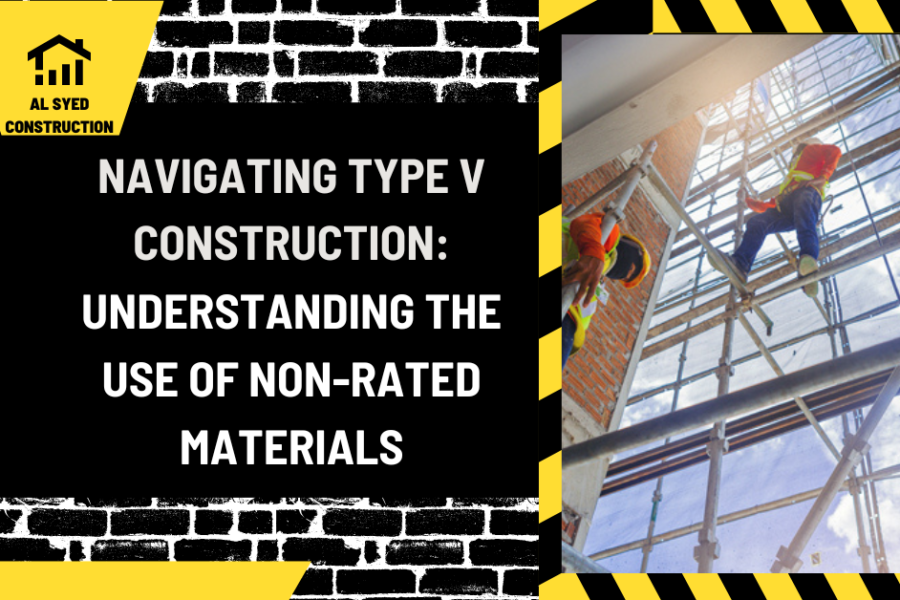Navigating Type V Construction: Understanding the Use of Non-Rated Materials
Introduction
In the diverse world of building construction, each type classified by the International Building Code (IBC) has its unique set of characteristics, particularly regarding fire safety and the use of materials. Type V construction stands out as it permits the inclusion of materials with no fire-resistance ratings in limited quantities, offering flexibility in material choice while adhering to safety standards. This article delves into Type V construction, highlighting its defining features, applications, and the strategic use of non-rated materials within its framework.
The Essence of Type V Construction
Characteristics and Flexibility
Type V construction is defined by its use of any materials permitted by the building code, including those without fire-resistance ratings. This construction type is often associated with wood-frame buildings but can include other materials like steel and concrete in non-structural components. The flexibility in material choice makes Type V adaptable to a wide range of architectural styles and construction needs.
Fire Resistance and Safety Measures
Despite allowing materials without inherent fire-resistance ratings, Type V construction must still meet overall fire safety and building standards. This is achieved through strategic design choices, such as the incorporation of fire-retardant treatments, the use of fire barriers, and the adherence to specific building layouts that enhance fire safety.
Applications of Type V Construction
Residential Buildings
Type V construction is commonly used in residential buildings, including single-family homes and low-rise apartment complexes. Its flexibility in material use allows for cost-effective and aesthetically pleasing designs while ensuring the structure meets safety regulations.
Small Commercial Projects
Small commercial buildings, such as retail stores and offices, also benefit from Type V construction. The ability to use non-rated materials in limited quantities can contribute to the unique character and functionality of these spaces, provided that comprehensive fire safety strategies are implemented.
Balancing Flexibility and Fire Safety
Strategic Use of Non-Rated Materials
The key to successfully incorporating non-rated materials in Type V construction lies in balancing architectural flexibility with fire safety. This involves careful planning and design to ensure that non-rated materials are used in ways that do not compromise the overall fire integrity of the building.
Compliance with Building Codes
Adherence to local building codes and regulations is paramount in Type V construction. Builders and designers must be knowledgeable about the specific limits on the use of non-rated materials and the required compensatory safety measures to maintain compliance and ensure occupant safety.
Conclusion
Type V construction offers a versatile approach to building design by allowing the use of materials without fire-resistance ratings in limited quantities. This flexibility facilitates a wide range of architectural styles and applications, from residential homes to small commercial buildings. However, the successful implementation of Type V construction requires a delicate balance between design flexibility and stringent adherence to fire safety standards. By strategically integrating non-rated materials and employing effective fire safety measures, builders can achieve both aesthetic and safety goals, ensuring that Type V buildings are both functional and safe for occupants.




